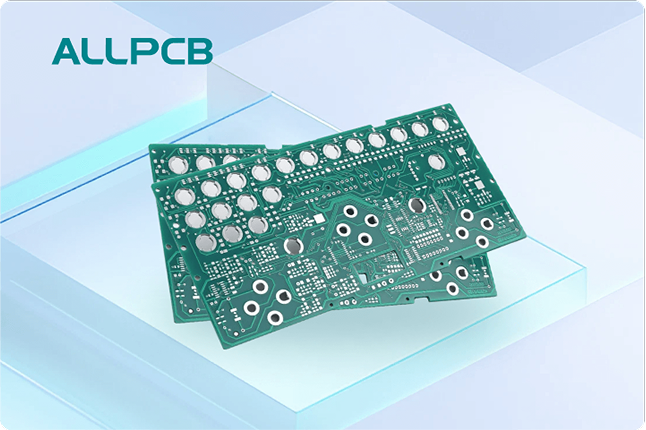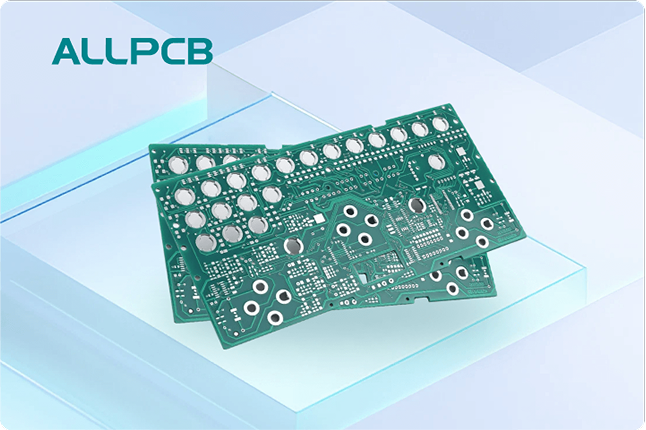If you're facing issues with PCB in-circuit testing (ICT), you're not alone. Many engineers encounter challenges like test probe issues, fixture problems, and in-circuit testing errors that can halt production and affect quality. The good news? Most of these problems have straightforward solutions. In this guide, we'll dive deep into common ICT troubleshooting scenarios, offering practical fixes for test probe issues, fixture problems, and ICT repair techniques to ensure your testing process runs smoothly.
At ALLPCB, we understand the importance of reliable testing in PCB assembly. Whether you're dealing with inconsistent results or hardware malfunctions, this blog will walk you through actionable steps to identify and resolve issues in your ICT setup. Let's explore the ins and outs of in-circuit testing errors and how to tackle them effectively.
What is In-Circuit Testing (ICT) and Why Does It Matter?
In-circuit testing, often abbreviated as ICT, is a critical step in PCB manufacturing. It involves testing individual components on a populated circuit board to ensure they function correctly before final assembly. Using a specialized test fixture with probes, ICT checks for shorts, opens, resistance, capacitance, and other electrical parameters. This process helps catch defects early, saving time and reducing costs in large-scale production.
ICT is especially important for high-volume manufacturing where even a small defect rate can lead to significant losses. For instance, detecting a faulty resistor with a resistance deviation of more than 5% during ICT can prevent a batch of 10,000 boards from failing in the field. However, when ICT itself encounters issues, it can disrupt the entire workflow. That’s where effective troubleshooting comes in.
Common Problems in PCB In-Circuit Testing
Even with advanced equipment, ICT can run into several hiccups. Below, we break down the most frequent issues engineers face during in-circuit testing and explain why they happen.
1. Test Probe Issues: Poor Contact and Wear
One of the most common problems in ICT is test probe issues. Probes are the physical connection points between the test fixture and the PCB, and any fault here can lead to inaccurate results. Poor contact often occurs due to dirt buildup, oxidation on test points, or worn-out probes that no longer apply sufficient pressure. For example, a probe with a contact resistance exceeding 50 milliohms can cause false failures in low-voltage circuits.
Additionally, probes wear out over time after thousands of test cycles. A typical spring-loaded probe might start failing after 100,000 cycles, leading to inconsistent readings or complete test failures.
2. Fixture Problems: Misalignment and Design Flaws
Fixture problems are another major headache in ICT troubleshooting. The test fixture holds the PCB in place and aligns the probes with test points. If the fixture is misaligned—even by a fraction of a millimeter—it can cause probes to miss their targets, resulting in open circuit errors. Misalignment often happens due to mechanical wear or improper setup during initial calibration.
Design flaws in the fixture, such as incorrect probe placement or insufficient support for the PCB, can also lead to issues. For instance, a poorly designed fixture might not account for board flexing, causing stress on components during testing.
3. In-Circuit Testing Errors: False Positives and Negatives
In-circuit testing errors, such as false positives (flagging a good board as defective) or false negatives (passing a faulty board), can stem from multiple sources. These errors often arise from incorrect test parameters, such as setting a resistance threshold too tight (e.g., rejecting a resistor at 1.02 kΩ when the acceptable range is 1 kΩ ± 5%). Environmental factors like temperature and humidity can also affect measurements, especially for high-precision components.
4. Component Accessibility and Test Coverage Limitations
Not all components on a PCB are easily accessible for ICT. Fine-pitch components or those placed under shields may be difficult to test, leading to incomplete coverage. For example, a surface-mount capacitor with a pitch of 0.5 mm might not have a suitable test point, making it impossible to verify its value during ICT.
5. Software and Calibration Issues
Modern ICT systems rely heavily on software to define test parameters and interpret results. If the software is outdated or improperly configured, it can misinterpret data or apply incorrect test limits. Similarly, lack of regular calibration of the ICT equipment can skew measurements, such as reporting a voltage of 5.1V as 4.8V due to drift in the measurement module.
Solutions for ICT Troubleshooting
Now that we’ve identified the common problems, let’s dive into practical solutions for ICT repair and troubleshooting. These steps are designed to help you resolve issues quickly and maintain the reliability of your testing process.
1. Addressing Test Probe Issues
To fix test probe issues, start with regular maintenance. Clean the probes and test points using isopropyl alcohol and a soft brush to remove dirt and oxidation. If probes are worn out, replace them with high-quality alternatives rated for at least 150,000 cycles to ensure longevity.
Check the contact pressure of each probe. Most ICT systems recommend a pressure of 100-200 grams per probe for reliable contact. If pressure is too low, adjust or replace the spring mechanism. Additionally, inspect the PCB test points for solder buildup or damage, as this can prevent proper contact.
2. Resolving Fixture Problems
For fixture problems, begin by verifying alignment. Use a precision measurement tool, such as a digital caliper, to ensure the fixture aligns with the PCB layout within 0.1 mm tolerance. If misalignment persists, recalibrate the fixture or consult the manufacturer for adjustments.
Inspect the fixture for wear, especially in high-use areas like guide pins and support blocks. Replace any damaged parts to prevent further issues. If the fixture design is flawed, consider working with a design team to modify it, ensuring proper support for the PCB and accurate probe placement.
3. Correcting In-Circuit Testing Errors
To tackle in-circuit testing errors, review the test program settings. Ensure that thresholds for resistance, capacitance, and voltage are within acceptable ranges for your components. For instance, if testing a 10 kΩ resistor, set the pass range to 9.5-10.5 kΩ to account for minor variations.
Control environmental factors by conducting tests in a stable environment, ideally at 25°C and 50% humidity, to minimize measurement drift. If false positives or negatives persist, cross-verify results with a secondary testing method, such as a manual multimeter check, to confirm the ICT system’s accuracy.
4. Improving Component Accessibility
For components that are hard to access, consider design-for-test (DFT) principles during the PCB layout phase. Add dedicated test points for critical components, even if they’re fine-pitch or shielded. If redesigning isn’t an option, use alternative testing methods like boundary scan testing (JTAG) to cover untestable areas during ICT.
5. Updating Software and Calibration
Keep your ICT software up to date to avoid bugs or compatibility issues. Regularly calibrate the system using certified reference standards to maintain measurement accuracy. For example, calibrate voltage measurements against a known 5V source to ensure readings are within 0.1V of the actual value. Schedule calibration checks at least every six months or after 10,000 test cycles, whichever comes first.
Preventive Measures for Smooth ICT Operations
While troubleshooting is essential, preventing issues in the first place is even better. Here are some proactive steps to minimize ICT problems and ensure consistent results.
- Regular Maintenance: Schedule routine cleaning and inspection of probes and fixtures to catch wear before it causes failures.
- Training for Staff: Train technicians on proper ICT setup and troubleshooting techniques to reduce human error during testing.
- Design for Testability: Collaborate with design engineers to include test points and accessible layouts in PCB designs, improving ICT coverage.
- Quality Components: Use high-quality probes and fixtures rated for extended cycles to avoid frequent replacements.
- Environmental Control: Maintain a controlled testing environment to prevent temperature or humidity from affecting results.
Benefits of Effective ICT Troubleshooting
Mastering ICT troubleshooting offers several advantages for your PCB assembly process. First, it reduces downtime by quickly identifying and resolving issues, keeping production on track. Second, it improves product quality by ensuring defective boards are caught early, preventing costly field failures. Finally, it saves money by minimizing rework and scrap rates—potentially cutting defect-related costs by up to 30% in high-volume production.
When to Seek Professional Help for ICT Repair
While many ICT issues can be resolved in-house, some problems require expert intervention. If you’re facing persistent errors despite troubleshooting, or if your fixture needs a complete redesign, consider partnering with a professional service provider. Specialized teams can offer advanced diagnostic tools and custom solutions to get your ICT system back to peak performance.
At ALLPCB, we’re committed to supporting your PCB testing needs. Our expertise in assembly and testing ensures that you have the resources to overcome any ICT challenge, from test probe issues to complex fixture problems.
Conclusion: Mastering ICT Troubleshooting for Reliable PCB Testing
Troubleshooting PCB in-circuit testing doesn’t have to be a daunting task. By understanding common problems like test probe issues, fixture problems, and in-circuit testing errors, and applying the solutions outlined in this guide, you can keep your ICT process running smoothly. Regular maintenance, proper calibration, and a focus on design for testability are key to preventing issues before they arise.
At ALLPCB, we’re here to help you achieve flawless PCB assembly with reliable testing practices. Whether you’re dealing with ICT repair needs or looking to optimize your setup, our team is ready to assist. With these tips and strategies, you’ll be well-equipped to handle any ICT challenge and ensure the quality of your electronic products.
 ALLPCB
ALLPCB







